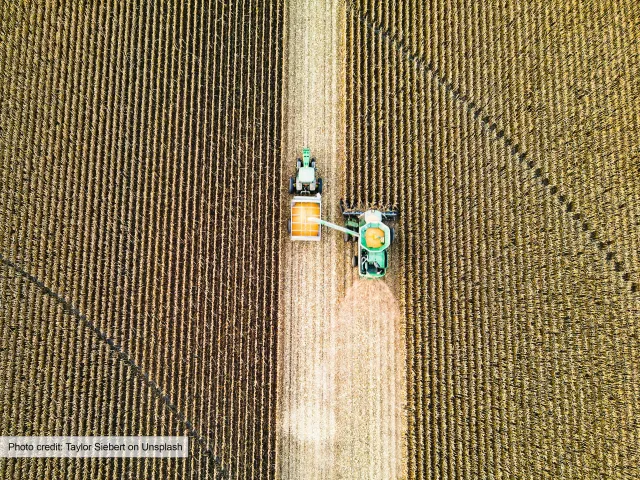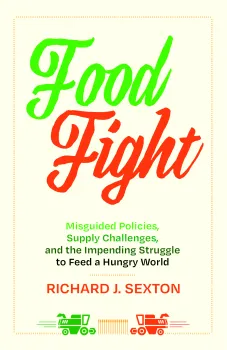
New book explores how current policies could increase the risk of food insecurity
With famine, global conflicts and food prices on the rise in many parts of the world, it should come as no surprise that hunger, malnutrition and food insecurity are still critical problems for our world to solve. In 2023 alone, nearly 733 million people faced hunger, and a whopping 29% of the population could be described as moderately to severely food insecure. Yet, as UC Davis Distinguished Professor Emeritus Richard J. Sexton argues in a recent ARE Update article based on his UC Press book “Food Fight,” misguided policies that reduce food crop yields or redirect food crops for use as biofuels may be taking us further from the goal of adequately feeding the world in the future.

Sexton notes that “there are four main factors which will drive the demand for agricultural products in the remainder of this century: population growth, income growth, the expanded dietary demands associated with income growth, and policy-driven growth in biofuel demand.”
Despite a slowdown in the population growth rate, the United Nations still anticipates that by the mid-2080s, we will reach a maximum of 10.3 billion people (up 26% from our current total of 8.2 billion alive today). And not only will we face more mouths to feed at the end of the century, but as incomes rise, there also tends to be an associated increase in the demand for food (both the total amount of food and the diversity of diet desired). As incomes rise, people tend to change from a diet heavy in staples like grains and tubers to one richer in fruits, vegetables and animal proteins. Though this dietary diversity may be healthier, animals don’t convert grains as efficiently into calories as directly producing grains for human consumption – i.e., it takes more land to feed people as animal protein consumption increases.
Further, as public policies mandate greater use of biofuels, many of our grains are used to feed neither humans nor animals but instead are used as a feedstock to produce fuel. In the United States – the top corn producer in the world – around a third of the corn crop is used for ethanol production, and nearly half of U.S. soybean oil is used to produce diesel fuel. Expanded biofuel use has also been shown to lead to expansion of the land base in agriculture. Conversion of forested lands to agricultural production is a major source of carbon emissions and other environmental harms.
Sexton notes that other government policies also contribute to reduced food supplies worldwide, including support for organic agriculture, local foods and animal welfare. Globally, a key factor constraining food supplies is policies that prevent farms from consolidating to attain minimum efficient scales of production.
When the conversation of successfully feeding the world comes up, many will say: “We’ll just do what we’ve always done in the past and increase agricultural productivity through innovation.” However, research has shown that, since the 1990s, the annual growth rate of agricultural productivity has been declining. Moving forward, the world’s farmers will face additional challenges to expanding the food supply, including climate change and pest resistance to traditional treatments. Will governments step up to these challenges by investing in agricultural productivity research and development, or double down on policies that add to the challenges?
To learn more about the trends and policies that may affect our ability to feed the world in the future, read the full article by Richard J. Sexton: “Are We on Track to Adequately Feed the World in the 21st Century?” ARE Update 28(6): 1–4. UC Giannini Foundation of Agricultural Economics, online at https://giannini.ucop.edu/filer/file/1755708271/21406/
ARE Update is a bimonthly magazine published by the Giannini Foundation of Agricultural Economics to educate policymakers and agribusiness professionals about new research or analysis of important topics in agricultural and resource economics. Articles are written by Giannini Foundation members, including University of California faculty and Cooperative Extension specialists in agricultural and resource economics, and university graduate students. Learn more about the Giannini Foundation and its publications at https://giannini.ucop.edu/.

